|
|
Pharos

|
|
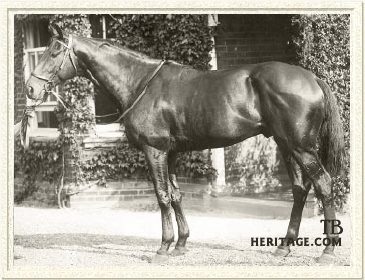 |
|
|
The Earl of Derby's Stanley House Stud was the most important
breeding and racing operation of its time, in the first half of the
Twentieth Century. Two of the most important products of that stud
were the full brothers Pharos and Fairway, bred on the famed Phalaris/Chaucer nick. While Fairway was the more gifted and classic of the pair, the speedier Pharos proved the more influential stallion, and his male line became one of the most significant in the last fifty years.
|
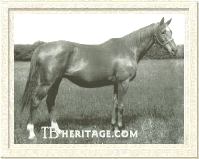
His dam, Scapa Flow | |
Pharos appeared in the first crop sired by the epoch-making Phalaris, Derby-bred, raced, and back at home, a cornerstone stallion. His dam was another homebred, the staying mare Scapa Flow by homebred
Chaucer. Scapa Flow's first foal was the cup horse Spithead (1919 by John O'Gaunt), and Pharos was her second. Subsequent foals included
Pharos' stakes winning full siblings, Fairway (1925), Fair Isle (1927) and Fara (1928).
|
Pharos was foaled on April 4, 1920, a neatly balanced middleweight
dark bay or brown colt with no white markings. Compactly made, with
good shoulders, good quarters, and loads of quality. As such, he more
nearly resembled his dam's sire Chaucer than Phalaris, although he threw back to Phalaris' innate speed rather than inheriting the stamina of his dam's side of the equation. If he could be faulted, it was for being slightly back at the knee and slightly sickle hocked. He was sound, agile, and dead game, owning an agreeable temperament
that made him well liked by his handlers.
Pharos on the Turf
A precocious sort, Pharos started nine times at two and won six of
these, breaking his maiden first time out in April at Newmarket going
five furlongs. He gained a reputation after wins in the Bedford
Stakes and Chesham Stakes (at Royal Ascot) but was beaten down a
notch after failing to defeat Legality in the Chesterfield Stakes at
Newmarket. He bounced back with a win in the Mersey Stakes at
Liverpool, then the Lambton Stakes at Stockton. Following a bad start
in the Nunthorpe Stakes, open to all ages, Pharos ran last, then was
second to Twelve Pointer in the Houghton Stakes at a mile. In
his final start of the year, he won the Hurst Park Great Two-Year-Old
Stakes (six furlongs) winning for the first time beyond five panels.
At season's end, Pharos was the fourth-ranked colt of his division on
the Free Handicap behind leader Town Guard, although his form
suggested he was not a classic candidate.
At three, Pharos ran another nine times, winning three races. He had
not been nominated for the 2,000 Guineas, so his early season
campaign started with a third the Pontefract Stakes on soft going
against an undistinguished field. At this stage of the season,
however, his trainer, the great George Lambton, realized that the
three-year-old crop had come up light, so he shifted Pharos to a
regimen to prepare him for the Derby. Pharos won the Hastings Stakes
and March Stakes, both at ten furlongs at Newmarket, and both by open
daylight. In the Derby itself, however, he got to the front in
the stretch, only to be overpowered by Papyrus who won by a length
and a half in a stiff stretch drive, but beating future Arc de
Triomphe winner Parth for the place.
Two weeks after that hard race, Pharos was back, although unplaced in
the Prince of Wales's Stakes going thirteen furlongs at Royal Ascot.
He barely won the Royal Stakes at Newbury over ten furlongs by a
desperate head over Kelvin. Off for four months, he returned in the
Select Stakes at a mile at Newmarket, and lost to the older colt
Stratford. His late season run in the nine furlongs Cambridgeshire
Stakes in which he ran fourth behind Verdict and Epinard, which made
a game race to finish within a neck of eachother. Pharos's last start
of the season was in the Liverpool Autumn Cup (ten furlongs), when
third to Poisoned Arrow and Evander. This on and off performance at
three left him with a reputation as only a "moderate" colt,
well below classic standard, although his performance behind the
highly regarded Epinard was overlooked.
At four, Pharos won four of seven starts, but his season debut, over
a soft course in the City and Suburban Handicap resulted in an
unplaced effort. Unplaced again in the Great Jubilee Handicap at
Kempton behind the victorious Parth, he was also seriously
embarrassed when running up the course and off the board in the Rous
Memorial Stakes at Royal Ascot, won by Twelve Pointer. But the tides
had turned for Pharos and in front of a home crowd at Liverpool
(close to where the Earl of Derby's seat was located at Knowsley), he
won the Liverpool Summer Cup, over a mile and a quarter-plus, tearing
off to win by six lengths. Facing only Borderer in his next
start, he won the North Sea Stakes over a mile at Redcar. In
the Duke of York Handicap at Kempton he won the ten furlongs event by
three lengths, beating Yeoman and Verdict. The Derby colt started
back just three days later in the ten furlongs Champion Stakes, which
he won authoritatively by beating Parth. The victory awarded him the
title of best older horse in training at that middle distance of a
mile and a quarter.
Pharos came back at five to defend the title but couldn't not match
his late season record of the year before. In five starts, he won
just once. His first start was in the March Stakes, in which he ran
third. He didn't race again for several months, returning in the
Liverpool Summer Cup, when a closer third to Winalot and Le Mantouan,
giving substantial weight to both. Dropping back to an utter sprint,
he was third to the brilliant Diomedes and Scherzo in the Nunthorpe
Stakes. Back at his favored distance of a mile and a quarter, Pharos
ran off to win the Duke of York Stakes by six lengths, giving large
increments of weight to the other thirteen runners. In what was to be
his final start, Pharos faced only the classy three-year-old Picaroon
in the Champion Stakes and was beaten by the younger horse by a half
length.
Pharos at Stud
Pharos was then retired with fourteen wins in 30 career starts and
had forged a reputation as the best ten-furlong horse of his era. He
entered stud in 1926 at Woodland Stud, Newmarket and, possibly due to
competition with his own sire (who stood at Side Hill Stud) in the
Derby Stud, was shifted to Haras d'Ouilly in France for the 1929
season. He stood there until his death on April 30, 1937 at the age
of 17. The leading sire in England in 1931 (when his son Cameronian won
the 2,000 Guineas and Derby Stakes), he was the leading sire in
France in 1939, when Pharis was the overwhelming champion
three-year-old. Pharos's most important son, however, was Nearco, one
of the greatest racehorses of the Twentieth Century.
|
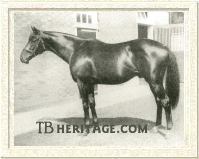
Nearco | |
NEARCO (br.c. 1935 out of Nogara by Havresac II) was bred in Italy
and owned by Federico Tesio. It is said that Tesio tried to get his
mare to Fairway, but Lord Derby refused to grant a season, so Nogara
went to his full brother Pharos instead. Undisputed champion of his
crop at two and three in Italy, Nearco's final start was in France in
the Grand Prix de Paris, which he won in demonstrative style, capping
an unblemished career of fourteen starts. Tesio recognized that his
champion was not a true stayer, but owned such electrifying
brilliance and nervous energy, that his class and heart carried him
beyond his physical limits. |
|
Retired to stud in England at the end of his three-year-old season,
Nearco became one of the most important sires of the century as well,
twice leading sire and getting the classic winners Dante (Derby
Stakes; sire of Toulouse Lautrec, Darius II, Landau, Diableretta,
*Dama II), Sayajirao (St. Leger, Irish Derby; sire of Irish Lass, But
Lovely), Nimbus (sire of *Distillate, *Lucy Lufton, *Stratus, The
Veil), Masaka (Epsom Oaks, Irish Oaks), Neasham Belle (Oaks; dam of
Aragon), Admirable (Irish Oaks), and Noory (Irish Oaks); and other
significant individuals in Nasrullah (champion at two; sire of Bold
Ruler, Never Bend, Never Say Die, Jaipur, etc.), Nearctic (Horse of
the Year in Canada; sire of Northern Dancer, Icecapade, Briartic),
*Royal Charger (sire of *Turn-to, *Royal Serenade, Francis S., Gay
Hostess), Mossborough (sire of Ballymoss, Cavan, Yelapa), Noorani
(dam of Charlottesville and Sheshoon), *Hafiz, Chief, Narrator, Noble
Chieftain, Amerigo (sire of Politely), Noble Lassie (dam of *Vaguely
Noble), Arctic Star, Rustom Sirdar, *Rivaz (dam of Palariva, Spicy
Living), Tessa Gillian, Sybil's Sister, Netherton Maid (dam of
Pampered King II, Bride Elect), *Malindi (dam of *Prince Taj), *Nilo,
and. The Nearcos tended to take after their sire, being a little
short of classic ability at a mile and a half, but full of brilliance
that allowed them to perform at the highest levels despite. |
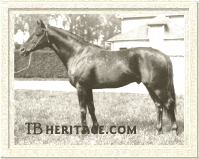
Pharis | |
Marcel Boussac's French-bred PHARIS (br. or blk. c. 1936 out of
Carissima by Clarissimus) is considered one of the greatest
French-bred runners of the century. He was so vastly superior in his
three starts at three, all wins, the Prix Noailles, Prix du Jockey
Club, and Grand Prix de Paris, that a match was in the works with
English champion Blue Peter (by Pharos' brother Fairway), but World
War II broke out before this could solidify. A large, rugged horse,
Pharis stood his first season at Boussac's Haas du Quesnay-le-Buffard
before being confiscated by invading Nazi forces in 1940. He was used
in the German National Stud until the end of the war, when he was
liberated and returned to Boussac in 1945. |
|
He was an important sire
for Boussac, getting Ardan (French Derby, Prix de l'Arc de Triomphe),
Priam II (champion at two), and Palencia (French 1,000 Guineas), in
his first crop, and Scratch (St. Leger, French Derby), Philius
(French Derby), Auriban (French Derby), Corejada (French 1,000
Guineas), Asterblute (champion at three in Germany), Pardal, Gabador,
Cortil, Tellaris, Dynamiter, Pharaos, Janitor, Albanilla, Cordovilla
and numerous others upon his return. His offspring were faulted for
not being the soundness of constitution, and having a tendency to
"go in their wind.
|
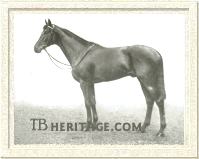
Cameronian
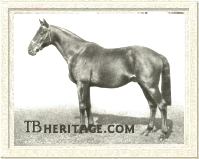
Phideas
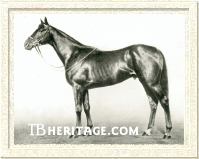
Firdaussi
| |
Lord Dewar's little colt CAMERONIAN (b.c. 1928 out of Una Cameron by
Gainsborough) won the Salisbury Stakes in his only appearance as a
juvenile. At three, he was third in the Craven Stakes, then stepped
up to win the 2,000 Guineas and move to the head of the class. He won
the Derby and St. James's Palace Stakes in quick succession, but,
later found to be ill, was dead last in the St. Leger Stakes.
Cameronian returned at four with a third place efforts in the
Coronation Cup and Jockey Club Stakes. In his third and final
start, he trounced Dastur in the Champion Stakes by four lengths.
Entering stud in England, he got St. Leger winner Scottish Union and
Ascot Gold Cup winner Finis from his second crop, as well as the
filly Sweet Aloe (dam of Chenille). Later crops included Nakamuro
(Italian Derby), and Snowberry (the dam of Chamossaire), but this
could not prevent his export to Argentina in 1941.
Pharos's son PHIDEAS (b.c. 1934 out of Imagery by Gainsborough) was a
younger half-brother to the Irish Triple Crown winner Museum (1932).
At two, he raced with little distinction until his fourth and final
start, when he won the Phoenix Plate at The Curragh defeating Royal
Stella and Inishbofin. At three, he won the Madrid Handicap, Irish
2,000 Guineas and Irish Derby before he was finished, with a record
of four wins in seven starts. As a stallion, his contributions were
slim. He got the good filly Frieze, winner of the Oaks in 1952, and
another filly, *Ate, who produced stakes winners *Prairie Oyster and
*Munch, and *Cow Girl II, effectively the only major influence by
their mutual sire Mustang. All three daughters were imported, and
*Cow Girl II produced the good colt Minnesota Mac for Tartan Farm,
sire of champion turf horse MacDiarmida and Roundup Rose (dam of
Preakness winner Codex).
|
FIRDAUSSI (ch.c. 1929 out of Brownhylda by Stedfast) was bred by H.H.
the Aga Khan, which Ulbrich describes as "a big, lusty chestnut,
strongly made but with a dipped back," suggesting he bore a
resemblance to his dam's sire, Stedfast. He won eight races from 21
starts. At two, he won the Fulbourne Stakes, Newbury Autumn Foal
Plate, and Dewhurst Stakes, and was fifth highweight of the crop at
that stage. At three, he was late getting up to form, including
unplaced in the Derby, before winning the Gordon Stakes, Duke of York
Plate, St. Leger Stakes and Jockey Club Stakes. As a four-year-old,
Firdaussi's only win was in the Triennial Produce Stakes at
Newmarket, although he was disqualified from first in the John Porter
Stakes and placed in the Eclipse, March, and Great Jubilee Handicap
Stakes.
Firdaussi stood his first season (1934) in England before shipping to
the Aga Khan's French stud, Haras d'Ouilly, for the 1935 season, and
in 1939 was sold to Rumania. Firdaussi sired French 2,000 Guineas
winner Panipat and stakes winner Escamillo. The latter sired Mother
Goose, and Flagette (out of a daughter of Firdaussi, so Flagette was
2x2 to Firdaussi; and later produced champion Herbager). Firdaussi's
influence also included the mare Fille de Poete (dam of Irish classic
winner The Phoenix and Tennyson), Melibee (third dam of Hoist the
Flag) and Chikoo (second dam of *Pappa Fourway).
MARY TUDOR II (b.f. 1930 out of Anna Bolena by *Teddy) was from
Pharos's first French-sired crop. Bred by American Jefferson Davis
Cohn, who stood her sire, *Teddy and bred most of the good ones by
*Teddy (including *Sir Gallahad III and *Bull Dog), she won the Poule
d'Essai des Pouliches (French 1,000 Guineas). As a broodmare, she
produced the Ascot Gold Cup winner and important sire Owen Tudor
(sire of Abernant and *Tudor Minstrel), as well as Oaks third Solar
Princess.
EN FRAUDE (ch.f. 1934 out of Aude by Clarissimus) was bred on the
same cross as Pharis II, out of a mare by Clarissimus. She won the
Prix de Diane (French Oaks) of 1937. Lord Derby's THE NILE (br.f.
1932 out of Pyramid by Papyrus) won the French 1,000 Guineas. She disappeared during World War II.
Marcel Boussac's Pharos daughter, SEMIRAMIDE (f. 1936 out of Sartella
by Sweeper II) was the champion juvenile of her year in France,
winning the Prix Monry, Prix Jacques Le Marois, and Criterium
d'Ostende. As a broodmare, she foaled three stakes winners led by
Corteira, winner of the Prix de Diane (French Oaks) and Poule d'Essai
des Pouliches (French 1,000 Guineas). |
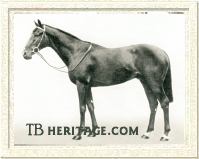
Rhodes Scholar
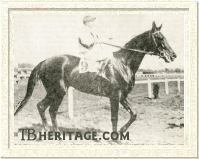
El Greco
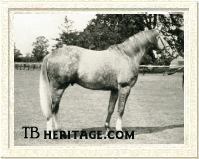
Pherozshah | | BRUEGHEL (c. 1932 out of Bunworry by Great Sport) was a stakes winner
in Italy and became a Leading Sire in Australia. BOZZETTO (c. 1936
out of Bunworry by Great Sport) was also a stakes winner in Italy and
returned home to become a Leading Sire there three times.
Federico Tesio's BERNINA (b.f. 1931 out of Bunworry by Great Sport)
is proof that the saga about the Italian breeder trying to get the
mare Nearco's dam initially to Fairway and "settling" for
Pharos may be just a story, since he had already had good success
with Fairway's brother Pharos in siring this filly. Bernina was a
full sister to Breughel (1932) and Bozzetto (1936). She won the Premo
Regina Elena (Italian 1,000 Guineas) and Oaks d'Italia. As a
broodmare, she produced Buonamica (by Nearco's half-brother Niccolo
dell'Arca), dam of champions Botticelli, Barbara Sirani, Bracque, and
stakes winners Bonnard and Bramantina.
Other useful sons of Pharos included RHODES SCHOLAR (sire of St.
Leger winner Black Tarquin), EL GRECO (sire
of Italian champion Romanella, dam of the great *Ribot), PHEROZSHAH
(sire of Rose O'Lynn, dam of Buisson d'Or and Buisson Ardent), SIGNAL
LIGHT, and *AMBROSE LIGHT.
Some Pharos sons had an important influence on steeplechasers and jumpers. FASTNET (1933), a sire of stayers, got Arc winner La Paillon, and the good runners Flocon, *Silnet, Fasciola and Irlande. He also got a top European steeplechaser, Le Radar, and the outstanding chaser-hurdler brothers The Fellow and Al Capone II (both Selle Français) descend from his son, Doncaster Cup winner Fast Fox. LINK BOY (1928), winner of the Greenham Plate, Select Stakes and Doncaster High-weight Handicap and four other races, was a modestly successful sire of juvenile winners. Link Boy's son Burma Road (1939) won the American Grand National, and another son, Magic Red (1941), became an important jumper sire who got Grand National Steeplechase winner Red Alligator and was maternal grandsire of the great chaser Red Rum. Another Pharos son, SHINING TOR (1931) got Water Serpent (1941), one of the most prolific jumping sires of the 1940s and '50s, with many offspring that competed at the top ranks of international show jumping.
|
Besides MARY TUDOR II, Pharos also sired three other significant
broodmare daughters. The most important of these was LAVENDULA (br.f.
1930 out of Sweet Lavendar by Swynford). She was the dam of French
champion and classic winner *Ambiorix, as well as his half sisters
Perfume II (dam of *My Babu) and Source Sucree (dam of *Turn-to and
ancestress of Irish River). The other useful broodmares were *NEVER
AGAIN II (dam of American champion two-year-old Oil Capitol and his
half-sisters Shuffle, Cigar Maid, and Pocket Edition) and PHARYVA
(dam of Derby winner Galcador and major stakes winner Goyaz).
After all was said and done, Pharos' tremendous influence as a
breeding stallion, as wide and dispersed as it had become, funneled
down to one key animal by the end of the Twentieth Century. That was
his and Federico Tesio's masterpiece, Nearco. It is through Nearco's
many good sons, but primarily *Nasrullah, *Royal Charger, and
Nearctic, that the vast majority of Thoroughbreds descend today in
direct male line. It's a rare tribute to the stallion, and his
breeder, that the influence of Pharos is so dominating in the breed
today.
--Anne Peters
|
|
|
|

